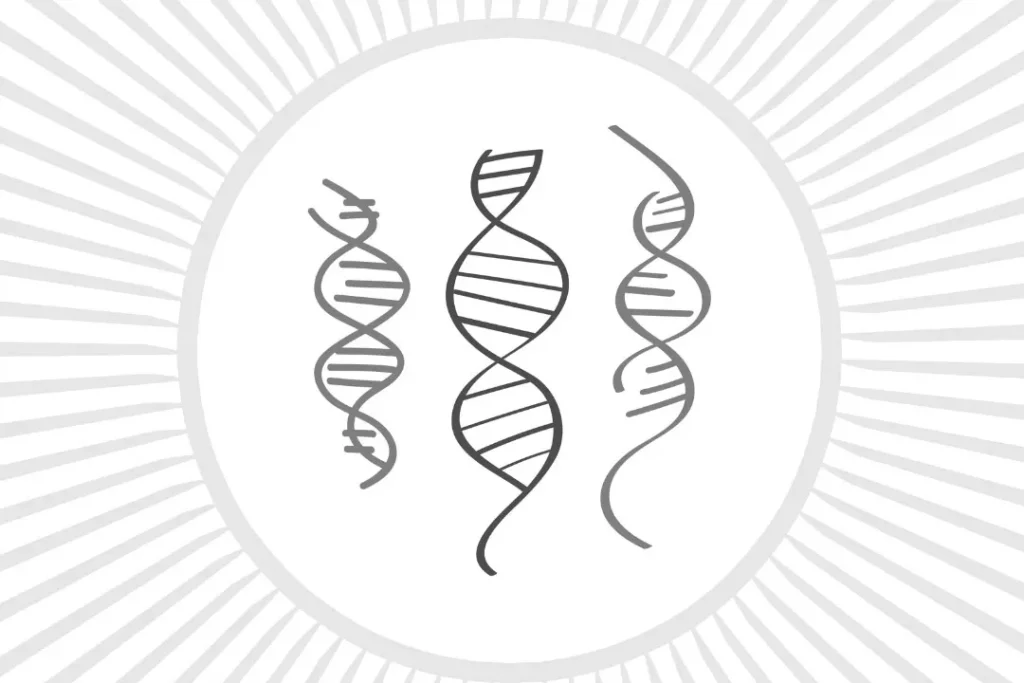Curcuma zedoaria, belonging to the Zingiberaceae family, is a perennial herbaceous plant that originates from Southeast Asia and India. The practice of utilizing this medicinal remedy has been esteemed in diverse cultural contexts, including Ayurvedic, Chinese, and Indonesian medicinal traditions. The bioactive constituents of the plant are primarily sourced from its underground rhizome, which bears a resemblance in both shape and size to ginger. Zedoary has been found to possess various health benefits, such as anti-inflammatory, antioxidant, anticancer, and antimicrobial properties, as revealed by recent scientific research. The present article explores the chemical properties of zedoary, its potential health advantages, recommended dosage, possible adverse effects, interactions with other substances, and appropriate usage.
You May Also Like:
Nootopia Brand vs MyPEAK Brand: Best Nootropic Supplements Compared
Natural Stimulants: Top 7 Supplements to Keep You Awake, Aware, and Focused
Nature of Zedoary
Zedoary is a herbaceous perennial plant that thrives in tropical and subtropical areas, with its primary distribution being in Southeast Asia and India. The botanical specimen has the potential to attain a vertical dimension of 1.2 meters(equivalent to 4 feet). It is characterized by its expansive, egg-shaped foliage and a pointed, fleshy underground stem. The rhizome, commonly known as the root of zedoary, serves as the principal origin of the plant’s bioactive constituents and therapeutic attributes.
The rhizome possesses a coarse, brown outer layer and a solid, light-yellow inner composition that emits a recognizable scent and a marginally acrid, sharp taste. Zedoary is a frequently utilized spice in several conventional Asian culinary practices, providing a distinct taste and scent to food preparations. Zedoary has been employed for various health benefits in traditional medicinal practices such as Ayurveda, traditional Chinese medicine (TCM), and Indonesian Jamu, in addition to its culinary applications, for centuries.
The propagation of Curcuma zedoaria is predominantly achieved through rhizome division. The botanical specimen exhibits optimal growth in soil that is adequately drained, possesses a loamy texture, and maintains a pH level that is slightly acidic to neutral. Thus, zedoary exhibits optimal growth in areas characterized by elevated humidity levels and moderate to heavy precipitation. Additionally, the plant must have partial shading to ensure its healthy development. Rhizomes are commonly collected approximately 8-10 months post-planting, at which point they have achieved their maximum dimensions and potency.

Health Benefits of Zedoary
- Zedoary possesses anti-inflammatory properties attributed to its curcuminoids and sesquiterpenes. These compounds inhibit the production of pro-inflammatory cytokines and modulate the activity of nuclear factor-kappa B (NF-κB), a transcription factor responsible for regulating inflammation. Zedoary has been found to effectively reduce inflammation and alleviate symptoms associated with inflammatory conditions such as arthritis, inflammatory bowel disease, and asthma by suppressing NF-κB.
- Zedoary is known to exhibit significant antioxidant activity owing to the presence of curcuminoids and flavonoids. These bioactive compounds are capable of effectively scavenging free radicals and mitigating cellular damage caused by oxidative stress. Hence, zedoary has the potential to safeguard against age-related ailments such as neurodegenerative disorders, cardiovascular conditions, and cancer.
- Zedoary has been found to possess potential anticancer properties, as evidenced by multiple studies. The efficacy of sesquiterpenes is highlighted, specifically germacrone and furanodiene in this regard. The aforementioned compounds can hinder the proliferation of cancer cells, trigger cancer cell apoptosis, and repress angiogenesis. Angiogenesis is the process of generating fresh blood vessels that provide nourishment to tumors. Furthermore, research has demonstrated that curcuminoids can increase the susceptibility of cancer cells to chemotherapy and radiation, thereby augmenting the effectiveness of treatment.
- The essential oils and sesquiterpenes present in zedoary have demonstrated antimicrobial activity against a range of bacteria, fungi, and parasites. Therefore, zedoary exhibits promising potential as a viable candidate for the development of innovative antimicrobia agents, particularly in combating antibiotic-resistant strains.
Zedoary has been traditionally utilized for the management of gastrointestinal ailments such as abdominal pain, indigestion, and flatulence. The antispasmodic and anti-inflammatory properties of the substance have the potential to mitigate gastrointestinal symptoms by inducing abdominal smooth muscles to relax and thus diminishing inflammation in the gastrointestinal tract.

Chemistry of Zedoary
As mentioned, the rhizome of zedoary is known to possess a diverse range of bioactive constituents such as curcuminoids, sesquiterpenes, flavonoids, and essential oils. Three of the primary bioactive constituents of zedoary are namely curcumin, demethoxycurcumin, and bisdemethoxycurcumin, which are responsible for their potent antioxidant and anti-inflammatory properties. Zedoary contains several sesquiterpenes, including germacrone, furanodiene, curzerene, and zederone, which are responsible for its various pharmacological properties such as anticancer, antimicrobial, and anti-inflammatory effects.
As previously stated, the rhizome of zedoary is endowed with a distinct aroma and taste, which is attributed to the presence of diverse terpenes and terpenoids, including cineole, borneol, and camphor. Zedoary also contains flavonoids, namely quercetin, kaempferol, and luteolin, which have antioxidant and anti-inflammatory properties.
Physiological Mechanisms of Action of Zedoary
The multifarious health advantages of zedoary can be ascribed to its heterogeneous bioactive constituents, which elicit their impacts via diverse physiological pathways. The following segment will expound upon the fundamental mechanisms of operation for the principal bioactive components of zedoary.
- Mechanisms of Anti-inflammatory Action: Curcuminoids and sesquiterpenes demonstrate strong anti-inflammatory characteristics that hinder the synthesis of pro-inflammatory cytokines, specifically tumor necrosis factor-alpha (TNF-α) and interleukin-6 (IL-6), by impeding the activation of nuclear factor-kappa B (NF-κB) signaling pathways. NF-κB is a transcriptional regulator that modulates the transcriptional activity of genes during the processes of inflammation and immune response. Zedoary has been found to be effective in reducing inflammation and its associated symptoms in various inflammatory conditions by inhibiting the activation of NF-κB.
- Curcuminoids and flavonoids also exhibit potent antioxidant properties, enabling them to counteract reactive oxygen species (ROS) and free radicals through various mechanisms. Unstable molecules possess the potential to induce oxidative harm to cellular constituents, including lipids, proteins, and DNA, thereby resulting in cellular malfunction and the onset of diverse ailments. Zedoary exhibits antioxidant properties by scavenging free radicals and inhibiting lipid peroxidation, thereby mitigating oxidative stress and conferring cellular protection against damage.
- Germacrone and furanodiene which are found in zedoary have been observed to possess anticancer properties through various mechanisms. The inhibition of cancer cell proliferation can be achieved through the disruption of cell cycle progression, activation of caspase enzymes to induce apoptosis, and suppression of angiogenesis by inhibiting vascular endothelial growth factor (VEGF) signaling. In addition, curcuminoids possess the ability to regulate the function of diverse molecular targets implicated in the pathogenesis and advancement of cancer, including protein kinases, transcription factors, and growth factors.
- The mechanisms of antimicrobial activity: Zedoary exhibits antimicrobial properties against various pathogenic microorganisms, such as bacteria, fungi, and parasites, due to the presence of essential oils and sesquiterpenes. Microbial cell death is caused by the disruption of the microbial cell membrane, interference with essential cellular processes, and inhibition of the synthesis of microbial proteins and nucleic acids.
- The antispasmodic effects of zedoary on gastrointestinal health are primarily ascribed to its essential oil constituents, including cineole and borneol. The aforementioned compounds can induce relaxation in smooth muscle tissue located in the gastrointestinal tract, thereby mitigating spasms and ameliorating correlated symptoms such as abdominal pain and cramps. Moreover, the anti-inflammatory properties of zedoary aid in enhancing gastrointestinal well-being by mitigating inflammation in the gastrointestinal tract lining.

Optimal Dosage of Zedoary
Given that the bulk of previous studies have concentrated on individual constituents rather than the complete rhizome, additional researches are necessary to establish the ideal dosage of zedoary for diverse health applications. Nevertheless, certain overarching principles for utilizing zedoary as a nutritional adjunct can be furnished.
Zedoary is a frequently ingested substance in traditional medicine, typically in the form of a powder or extract. The standard recommended dosage for zedoary powder is between 1 to 3 grams per day, while a daily intake of 300 to 600 milligrams of the standardized extract is also considered appropriate. Prior consultation with a healthcare practitioner is imperative before you integrate zedoary into your routine, given the variability in your requirements based on factors such as age, health condition, and possible contraindications.
Side Effects of Zedoary
Zedoary is generally regarded as safe when ingested in moderate quantities as a food or dietary supplement. Nevertheless, overconsumption of the substance may result in adverse gastrointestinal reactions, such as nausea, diarrhea, and abdominal discomfort. Moreover, certain individuals may encounter an allergic response to zedoary, characterized by indications such as cutaneous eruption, pruritus, and edema.

Potential Substance Interactions with Zedoary
Zedoary has the potential to interact with various medications and substances, which may result in changes to their effectiveness or the occurrence of unfavorable effects. Several possible interactions are mentioned below.
- The utilization of zedoary in conjunction with anticoagulant or antiplatelet medications, such as warfarin, aspirin, or clopidogrel, may heighten the possibility of bleeding due to its anti-inflammatory properties. It is advisable to seek the advice of a healthcare professional before the consumption of zedoary if you are taking any blood-thinning medications.
- The concomitant use of zedoary and anti-diabetic medications may result in an augmentation of the hypoglycemic properties of the anti-diabetic medications, leading to a potential risk of hypoglycemia. Individuals who are utilizing pharmaceutical interventions for diabetes are advised to meticulously monitor their blood glucose levels and consult with a healthcare practitioner before integrating zedoary into their treatment plan.
- Zedoary has the potential to hinder specific cytochrome P450 enzymes that are essential in the metabolic processes of diverse pharmaceuticals, thereby classifying them as cytochrome P450 substrates. This interaction has the potential to result in elevated drug concentrations in the body, thereby increasing the likelihood of experiencing adverse effects. It is advisable to seek advice from a healthcare professional prior to the use of zedoary if you are consuming medications that are metabolized by cytochrome P450.

Responsible Use of Zedoary
To promote responsible utilization of zedoary as a dietary supplement, it is advisable to take into account the subsequent suggestions:
- It is advisable to seek advice from a qualified healthcare professional prior to integrating zedoary into your dietary plan. It is advisable to consult with a healthcare practitioner regarding its potential advantages, adverse effects, and possible interactions, particularly if you have an underlying medical condition or are currently undergoing medication.
- Select a supplement of superior quality. It is recommended to select zedoary supplements from reliable manufacturers who comply with Good Manufacturing Practices (GMP) and conduct third-party testing to guarantee the quality and effectiveness of the product.
- Adhere to the prescribed dosage as advised. It is recommended to strictly adhere to the suggested dosage guidelines or seek guidance from a healthcare professional to prevent any possible side effects or interactions.
- It is advisable to keep track of your reaction to the supplement. It is recommended to monitor the physiological reaction of the body towards the intake of zedoary supplements and promptly inform the healthcare provider of any unfavorable outcomes or unforeseen advantages.
Zedoary:
Conclusion
Zedoary originates from a perennial herbaceous plant that is grown in Southeast Asia and India and has numerous healing properties especially in improving appetite and curing indigestion. Aside from this, its antioxidant, anti-inflammatory, antimicrobial, and anticancer properties should not be overlooked as they contribute to several critical metabolic processes in the body.
In terms of helping with indigestion, zedoary supplements help in relaxing abdominal smooth muscles and reducing inflammation in the gastrointestinal tract. It is highly advised that you seek consultations from your healthcare providers to understand the appropriate way to include zedoary into your daily diet as potential side effects are likely to happen when zeodary is taken in the wrong combination. You should also source zedoary only from quality and reputable sellers.
References:
- Herbal Medicine: Biomolecular and Clinical Aspects. (2011). CRC Press/Taylor & Francis. Retrieved from: https://www.ncbi.nlm.nih.gov/books/NBK92773/
- Baliga, M.S., et al. (2011). A review of the chemistry and pharmacology of the Ayurvedic spice, Zedoary (Curcuma zedoaria Roscoe). Retrieved from: https://www.researchgate.net/publication/51647243_A_review_of_the_chemistry_and_pharmacology_of_the_Ayurvedic_spice_Zedoary_Curcuma_zedoaria_Roscoe
Important Note: The information contained in this article is for general informational purposes only, and should not be construed as health or medical advice, nor is it intended to diagnose, prevent, treat, or cure any disease or health condition. Before embarking on any diet, fitness regimen, or program of nutritional supplementation, it is advisable to consult your healthcare professional in order to determine its safety and probable efficacy in terms of your individual state of health.
Regarding Nutritional Supplements Or Other Non-Prescription Health Products: If any nutritional supplements or other non-prescription health products are mentioned in the foregoing article, any claims or statements made about them have not been evaluated by the U.S. Food and Drug Administration, and such nutritional supplements or other health products are not intended to diagnose, treat, cure, or prevent any disease.


